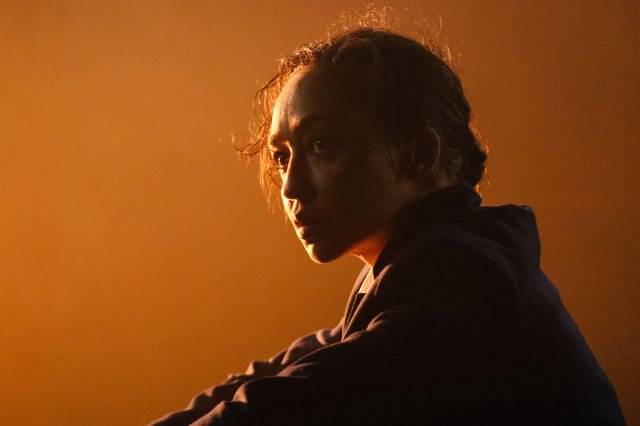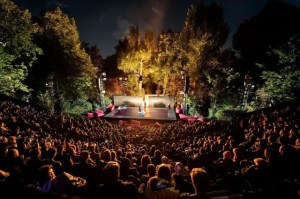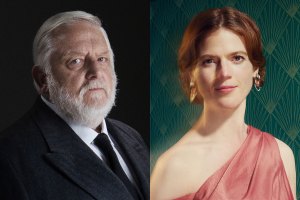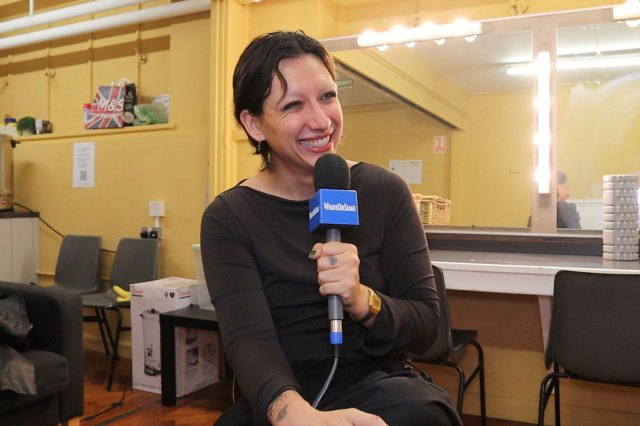Quiet Songs at the Barbican Centre – review
The world premiere production, starring Oscar nominee Ruth Negga, runs until 2 November

If you’ve spotted “music theatre” on this show’s billing, be warned: frothy West End musical it is not. Written, composed and directed by Finn Beames (and his first work with the newly minted Finn Beames and Company), it won the Oxford Samuel Beckett Theatre Trust Award, which supports experimental new work. And it is indeed experimental, in a way that is both taxing and intoxicating.
It tells the semi-autobiographical story of “Boy”, a young gay person enduring homophobic classroom bullying, on top of the usual cruelties of adolescence. At the centre of these struggles is Boy’s voice, which is breaking, and is used as ammunition for the bullies’ homophobia. Beames explores the idea of voices – their fragility and their power – with the help of one actor (a phenomenal Ruth Negga) and an onstage string quartet, who use an armoury of swords to play their instruments and provide percussion.
If voice is the thematic thrust of this show, then we’d better start with Negga, who has utter mastery of hers. She is Boy’s scathing inner monologue, plosives and fricatives flying as she hisses and spits shame into our hero’s ear. The arch teenage outsider, coolly, languorously, skewering peers from the social perimeters. And Boy’s teachers, distinct in their cadences, unanimous in their failure to protect him. Negga’s physicality is just as adept, from adolescent hands stuffed awkwardly in pockets, to the wild, glittering eyes of a teacher on a power trip.
And thank goodness she’s such a pro because she is cradling a thing of great beauty. Beames’s script is an hour-long poem, each line as delicious as the last. Internalised shame is “everything that gnaws, unuttered”; a breaking voice is all “knicks and whimpers”; and Boy’s headmistress is a “pitiful little tyrant” in “too-big blazers”, whose face goes red when she shouts, “like she’s the first one to go in a plague movie.”
The headmistress section is one of only a few moments of welcome levity, and a few more would give the show a better tonal rise and fall. As it is, an almost ceaseless gloom hangs over it, with Bethany Gupwell’s meticulous lighting following suit. Fluorescent strips glow in time with ominous chords, and a pile of old-Hollywood arc lights replicates the blazing sun, but we’re often plunged into near-darkness. It’s a neat mirroring of Boy’s bleak experience, it adds to the quiet menace of Samal Blak’s minimal set, where glinting swords dangle overhead, and it helps us focus on Beames’s unnerving score and Negga’s electrifying vocals. But it also eclipses that brilliant physical performance of hers, which starts to feel frustrating.

This frustration also niggles during some of the experimental instrumental sections, where the four musicians explore the sonic potential of swords and strings. They stage sword fights (and bow fights, letting off plumes of rosin), and wear fencing helmets (which they later tap on percussively) as they pluck at their instruments. At one point a musician dips a sword in and out of water, stroking the bow across it as the water’s depth changes the pitch.
It is interesting and powerful, to a point. The swords represent the harm voices can inflict, and the protection that should be there for Boy, but isn’t. And hearing them scraping across strings does conjure the shakiness of a breaking adolescent voice. But the length of the sections leaves the show teetering on the brink of obfuscation, perhaps even self-indulgence (although it never quite falls over the precipice).
If I’m being totally honest, perhaps my real grumble is this: being dragged away from Negga’s thrilling performance and Beames’s exquisite script for even a second feels like a second too long.


















